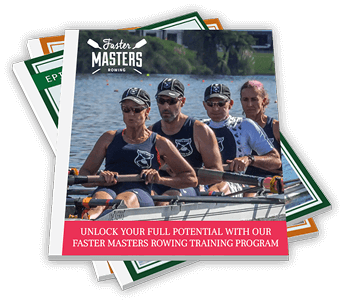If your knees don't bend more than 90 degrees, what can you do? Ways to get more reach in the stroke if you have knee limitations.
Timestamps
00:45 A 70 year old with osteoarthritis in both knees asks how to get more reach.
Recognise where your comfort zone is where you are capable of pushing your limits. As you roll forward into the catch your ankles, pelvis and lower body also need to bend. You can do a functional movement assessment to understand your mobility in those other joints - and whether they can be made more flexible using sports massage, stretching or osteopathy.
Test yourself with our Functional Movement Assessment - free webinar.
03:00 3 ways to get more compression
The ideal is to get shins vertical at the catch with your heels lifted, back leaning forwards so your shoulders are sternward of your hips.
- Measure the shoe to seat height - typically it would be 15-16 cm for a woman of your height. Increase this to over 17cm by lowering the shoes and/or raising the seat with a 1 cm high seat pad. Beware low shoes may mean your calves hit the deck of the boat which isn't comfortable. Test this out on a rowing machine first - use a mirror to see the effect it has.
- Change the rake or angle of the footstretcher. Most are around 42-45 degrees. Making it shallower may enable you to get more compression - but it's impacted by your ankle flexibility. Osteopaths are good at both soft tissue massage and bone manipulation - show them a photo of rowing to explain what you're trying to achieve. I brush my teeth daily squatting on the floor to improve my ankle flexibility trying to keep my feet flat on the floor.
- If you buy your own seat, you can unscrew the seat top from the undercarriage and insert batons of wood to raise the seat. Check the track widths on the boats you use first so you know the seat will work in multiple boats (generally small boats have narrower track widths than larger boats).
10:30 Rigging adaptations
The arc the oar travels through around the oarlock can be adjusted. Move the pivot point closer to the handle (try 1 or 2 cm). This enables your handle to move further around the arc - shortening the inboard relative to the outboard. But don't increase the load (gearing) a lot = keep the ratio of the length of outboard to inboard the same.
By using slightly shorter oars than your crew mates and a shorter inboard, you can increase the arc that the tip of your blade moves through each stroke. You will need to change your footstretcher too - closer to the stern. Keep the gap between your handles at the finish the same.
Mike Davenport explains more on the Rigging for Masters expert webinar. You may also look at increasing your layback / back swing too. Talk this through with your coach.

